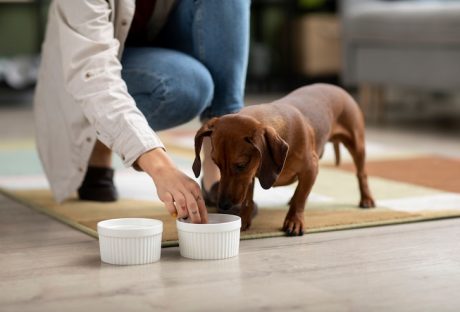The term pet is a general one that essentially can mean anything from the standard pets such as dogs, cats, and bunnies, to even spiders and scorpions for that matter! However, we will stick to the domesticated dogs and cats for the better part of this list and cater to the general audience.
Pet Supplements: Which Ones are the Best for Your Pet:
Fish Oil:
We know that fish oil is good for us, given that it’s an active deterrent against atherosclerosis and heart disease, but it can also be good for both dogs and cats as well. However, the reason why they are effective supplements for our pets is quite different from the reasons that make fish oil good for human beings.
In spite of there being several claims for other benefits, the most significant and proven improvement is seen in a pets’ skin and fur. Coats become healthier and pets suffering from skin allergies may experience improvements when taking fish oil supplements.
Elk Antler Velvet:
Depending on the age and physical condition of the dog, elk antler velvet supplements can be useful for a variety of reasons. They have been associated with strengthening the canine immune system and might even provide protection against kidney damage. In particular, older dogs have been seen to move with less discomfort when supplemented with elk antler velvet supplements. They are, however, not meant for cats.
Probiotics:
Before we explain what probiotics can mean for dogs and cats in general, it is first necessary to understand what probiotics are.
Quite simply put, probiotic supplements are capsules full of helpful bacteria that reside in the gut and help us to digest food better. Depending on the species of animal in question, the bacteria species will also vary.
In the case of dogs and cats, probiotic supplements produce some of the best results seen in pets. That being said, just because a product has lactobacillus and probiotics written on the label, it doesn’t automatically mean it will do wonders for your pet.
If you are planning to buy online, just go through the user reviews first to know if the product is the right one for your pet and worth your money. Bacterial strains are quite easy to get wrong, so unless monitored with strict quality control measures, one strain is easy to mistake for another, which could actually make your pet very sick, if not worse.
CBD Supplements:
Finally, we have the newest trend, which is CBD supplements in all their recent glory. While they do have the possibility to bring a number of benefits to both feline and canine physiologies, there is not enough evidence yet to suggest they really work. However, approved pet CBD supplements can make your pet calmer and may help with bringing down inflammations due to their natural anti-inflammatory nature.
While giving your pet supplement for the first time, do not mix and match. See what effect it has on your pet first before being sure of its safety.
Read Also:






















